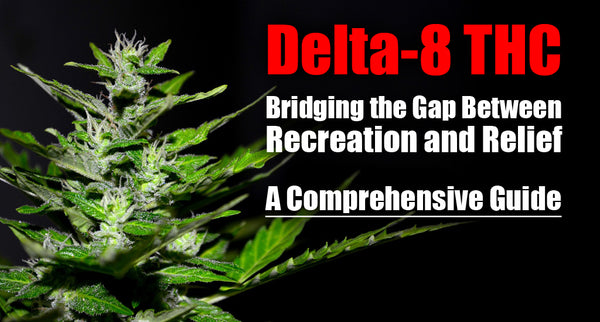
Step three: Marijuana Vegetative Stage - For Indoor Growing
First! TRANSPLANTING YOUR PLANT TO A BIGGER POT
After the initial seedling stage, once your plant has developed a minimum of 3-4 sets of authentic leaves, it is time to undertake the process of transferring it into a larger container.
Here are four straightforward steps to achieve this:
1. Select an Appropriate Pot Size: Opt for a new container that is at least three times larger in volume compared to the old one. This ample space allows the plant's roots to spread and flourish. Begin by filling the new pot with your chosen growing medium until it reaches about three-quarters full.
2. Gentle Transplantation: Keeping the plant within its original small pot, position both the plant and pot into the new growing medium. Gently embed the pot into the medium, ensuring to leave approximately half a centimeter of the pot's top exposed. This slight elevation provides a stable base for planting the roots. Once this step is completed, carefully lift the plant and pot out of the medium, leaving a depression in which to place the plant.
3. Root Extraction: Hold the plant's main stem between your middle and ring (or index) fingers, and invert the pot. Gently squeeze the pot's sides and give a slight shake until the plant becomes dislodged, allowing the root ball to be extracted from the pot.
4. Replanting: After removing the plant from its old pot, you'll notice a network of roots. If they appear congested, you can gently break them apart before placing them into the new pot. This encourages the roots to untangle and promote fresh growth. Carefully position the plant's root ball into the new pot, fitting it neatly into the recess created in step 2. Gently settle the plant into the hole, and if needed, add more growing medium to the pot.
It's worth noting that based on my experience, the ideal time to transplant a cannabis plant in soil is when it's about halfway between waterings. If the soil is too wet, it can be challenging to remove from the original container and might lead to root damage due to the increased weight of the soil. Conversely, if the soil is too dry, more soil may fall away, exposing the roots. Therefore, aim to transplant when the soil is dry on the surface but still moist within the first inch or two.
Despite your careful efforts, the transplant process may still cause minor stress to the root system, requiring some time for recovery. This stress is a natural response following transplantation. To minimize this, consider performing the transplant during the nighttime hours. This allows the plant to settle before it commences the photosynthesis process in the morning.
Related article: Top 7 Online Stores for Marijuana Growing Supplies and Equipments

MANAGE YOUR GROW ROOM DURING VEGETATIVE STAGE
After successfully transferring the seedlings into larger pots, the next step involves creating an optimal climate for the plants to thrive in their growth phase.
1. Lighting Considerations: The duration and quality of light are crucial factors during this stage. It is recommended to maintain a light cycle of 16 to 20 hours per day, with popular choices being 18 hours of light followed by 6 hours of darkness for the vegetative phase, and 12 hours of light followed by 12 hours of darkness for the flowering phase. Some growers opt for a continuous 24/7 light cycle during the vegetative phase, though conclusive data does not indicate a distinct advantage for light durations ranging from 16 to 24 hours. A minimum of 16 hours of light is necessary to keep the plants in the vegetative state; any less may trigger the onset of flowering, mimicking the natural response to approaching winter.
While manual light control is possible, utilizing a light timer controller is highly recommended. Even with budget constraints, investing in a timer is advisable due to its affordability and the convenience it provides. This automation alleviates the need for manually adjusting the lights multiple times a day, reducing the risk of accidental errors. Consistency in light schedules is vital to prevent minor deviations that could potentially induce stress and lead to undesirable outcomes like the development of hermaphroditic traits in flowering cannabis plants, a topic previously addressed in our Indoor Growing series.
Related article: 5 Reasons Why You Should Grow Your Own Weed
It's important to note that cannabis plants necessitate approximately 15% of the blue segment within the light spectrum to prevent excessive stretching. Inadequate exposure to blue light can lead to the development of thinner stems and, over time, a weaker plant structure characterized by elongated internodes – the segments of the plant stem situated between two nodes from which leaves emerge.
Addressing the issue of excessive stretching in cannabis plants involves various strategies. One such strategy pertains to the manipulation of light spectrum and photosynthetically active radiation (PAR), which can help regulate plant growth. Temperature control is another factor contributing to this endeavor.
In line with our prior discussion, if you're engaged in small-scale cultivation (up to 6 marijuana plants), employing T5 fluorescent lighting or compact spiral fluorescent lights (CFLs) is a viable choice. However, for optimal outcomes, it is recommended to consider a more advanced lighting option such as a metal halide bulb or high-quality LED lighting. These choices tend to yield superior results, enhancing the overall growth and development of your cannabis plants.

2. Temperature Control: During the "daytime" phase when the grow lights are activated, maintaining an optimal temperature of 78 degrees Fahrenheit is recommended for an ideal cannabis cultivation environment. If you tend to be meticulous in your approach, akin to my own tendencies, it's important to acknowledge that achieving an exact constant temperature might seem daunting. In such cases, it's essential not to be overly self-critical. A temperature range spanning from 73 to 83 degrees Fahrenheit is still conducive to successful growth.
During the "lights off" period, allowing the temperature to drop to a range of 60-65 degrees Fahrenheit is acceptable without causing harm. However, it's advisable to avoid temperatures falling below this range. Similarly, it's prudent to prevent temperatures from surpassing 85 degrees Fahrenheit whenever possible. Beyond this threshold, the growth of the plants becomes inhibited, and this effect intensifies with further temperature elevation.
Nevertheless, it's worth noting that minor deviations from the recommended temperature range need not be a source of undue concern. Cannabis plants have a remarkable ability to acclimate to specific conditions, meaning that slightly warmer or cooler temperatures may still be tolerable, as long as consistency is maintained. In fact, focusing excessively on temperature precision can be counterproductive, as fluctuations in temperature can prove more problematic than modest variations in warmth or coolness. Striving to keep daytime and nighttime temperatures within a difference of 10 degrees Fahrenheit from each other is a reasonable guideline to follow. This approach ensures that your cannabis plants are provided with a stable and conducive climate for optimal growth.
3. Humidity Management: Turning our attention to humidity levels, it is advised to maintain a consistent range of 45% to 65% within your cannabis cultivation space. This humidity range serves as an essential parameter for fostering optimal growth conditions. Notably, for clones and seedlings, a higher humidity range is particularly favorable. This elevated humidity setting encourages the absorption of moisture through the leaf surface rather than solely relying on root-based absorption.
The rationale behind this preference is rooted in the developmental stage of clones and seedlings. These young plants possess underdeveloped root systems, which prompts a more efficient utilization of moisture via their leaves. This approach facilitates their ability to amass essential moisture while concurrently building the foundational root system required for sustainable growth.
4. Watering Guidelines: When it comes to watering your cannabis plants cultivated in soil, a prudent approach involves supplying water when the growing medium reaches a state of near-complete dryness. You can ascertain this by observing the top layer of soil – if it's dry to a depth of about an inch, a straightforward test involves inserting your finger to your first knuckle. If the soil is parched at this depth, it indicates that the plant requires watering. Additionally, visible indicators like drooping leaves can serve as cues, albeit slightly belated, that watering is necessary. Addressing this promptly should lead to the plant's recovery within approximately 20 minutes.
A further assessment can be conducted by lifting the pot. A noticeable heaviness suggests sufficient water content for the plant, whereas a sensation of lightness signals the need for watering. It is imperative to highlight that these guidelines are specifically tailored to cannabis cultivation in soil. If you are cultivating in coco, it is imperative not to let the medium dry out, as this environment diverges in terms of moisture requirements.
It is important to emphasize that overwatering poses a more intricate and gradual challenge to rectify compared to underwatering. Erring on the side of caution is advised, and one should abstain from watering until confident that the plant truly demands it. Cannabis plants have a remarkable ability to communicate their water needs, making it vital to pay heed to their signals.
Regarding the watering process itself, the objective is to ensure thorough saturation of the pot. Water should be administered until excess liquid commences draining out from the bottom of the pot. As a general guideline, the runoff volume should equate to approximately 10-20% of the water applied. For those engaged in organic weed cultivation, it's prudent to minimize runoff, as the elements washed away during the process are essential to the beneficial bacteria within the medium.
Maintaining a meticulous approach during the watering regimen involves tracking and documenting the process. Establishing a schedule in accordance with the watering/drying cycle is advantageous. However, it is essential to acknowledge that the plants themselves can provide valuable insights into their preferred schedule through observable cues. If uncertainty persists regarding the appropriate watering frequency, relying on these visual cues is a reliable strategy to ensure the plants' optimal hydration.
5. Nutrients: During the vegetative stage of plant development, maintaining an adequate supply of Nitrogen (N) within the soil is crucial. This essential nutrient is sourced from both your chosen potting soil and the fertilizer solution you apply. If you have adopted the recommended FoxFarm Ocean Forest potting soil, as outlined in our prior guide (Step One: How to Build the Perfect Indoor Grow Room), it's advisable to initiate your fertilizer solution regimen at no more than half of the manufacturer's prescribed strength.
Exercise caution when considering an escalation in the potency of your fertilizer solution. This should only be contemplated in response to identified nutrient deficiencies. Similar to the approach taken with watering, it's worth emphasizing that an excess of nutrients is more likely to induce toxicity and scorching than the development of severe deficiencies due to insufficient feeding. Toxicities are often encountered more frequently in indoor cultivation setups than deficiencies. Rectifying an undernourished plant is generally more manageable compared to addressing the consequences of excessive feeding. Hence, a prudent course of action is to exercise moderation in administering nutrients.
To learn more about the best type of soil for your marijuana garden, here is The Definitive Guide To The Best Soils For Cannabis.
6. Air circulation and ventilation: The significance of adequate air circulation and ventilation was previously explored in our guide titled "Step One: How to Build the Perfect Indoor Grow Room (For up to 6 Plants)." This aspect holds paramount importance in nurturing thriving and robust plants. Beyond this, the process contributes to stabilizing both temperature and relative humidity levels within the growing environment.
- Ensure the presence of an appropriate number of fans, tailored to the dimensions of your cultivation space as well as the scale of the fans, to facilitate effective air circulation.
- Exercise caution to prevent direct airflow onto the plants themselves. Redirecting the airflow beneath the plant canopy, particularly if encountering pest challenges or confronting concentrated humidity areas, is not only acceptable but even recommended.
- Maintain a consistent practice of maintaining two distinct openings within the grow room. This practice facilitates the continuous expulsion of stagnant air while facilitating the influx of fresh air. Remain vigilant about potential light leakage originating from these openings.
Optimally, the goal is to refresh the air within the grow room or tent at a rate of two to three times per minute. Achieving this objective is typically accomplished by implementing an exhaust fan paired with appropriate ducting. Many grow tents are equipped to accommodate this setup. Exhaust fan capabilities are quantified based on their air-moving capacity over a specific time frame, often measured in cubic feet per minute (CFM).
By adhering to these practices, you establish a conducive environment that fosters the optimal growth and well-being of your cultivated plants.
Optimizing Ventilation for Successful Indoor Plant Growth: Calculating and Implementing Effective Air Exchange
To ascertain the optimal level of ventilation required for your grow room, a straightforward process involving measurements and calculations, akin to fourth-grade concepts, is necessary. Here's a concise overview along with an illustrative example:-
Measure the Grow Space: Begin by measuring the dimensions of your cultivation area, encompassing length, width, and height. These figures should already be familiar if you are utilizing a grow tent or have established a custom grow space. For instance, my grow tent measures 4 feet by 4 feet by 7 feet.
-
Calculate Volume: Compute the volume of your grow space using the formula Length x Width x Height. Applying this formula to our example, 4 x 4 x 7 results in a volume of 112 cubic feet (ft3).
-
Determine Air Exchange Rate: The objective is to achieve an air exchange rate equivalent to two to three times the tent's volume every minute. Given our tent volume of 112 ft3, this translates to the following range: 112 x 2 = 224 and 112 x 3 = 336. Consequently, the desired exhaust fan should have a capacity of at least 224 cubic feet per minute (CFM), while exceeding 336 CFM is deemed excessive. It's worth noting that slightly surpassing the recommended range is acceptable, as many fans come equipped with speed controllers enabling precise ventilation adjustment. Alternatively, standalone speed controllers can be purchased if your fan lacks this feature.
-
Consider Additional Factors: It's important to factor in the length of ducting required for the ventilation setup and the anticipated addition of a carbon filter. Incorporating a carbon filter introduces an extra load on the fan, leading to decreased air draw. To accommodate this, add a 20% margin to the calculated air removal requirement, particularly if extended ducting and a carbon filter are in use.

Optimizing Vegetative Stage Duration for Superior Crop Quality: A Strain-Dependent Timeframe
The precise duration of the vegetative stage holds paramount importance in ensuring the production of high-quality crops and influencing plant robustness, although this timeframe varies across different strains.
In a general context, the recommended minimum length for the vegetative stage of cannabis spans around four weeks. This marks the point at which a cannabis plant attains maturity. Prior to this juncture, irrespective of the light cycle the plant is subjected to, flowering will not initiate. It is imperative to closely monitor your plants prior to advancing to the subsequent phase, namely the Flowering Stage. The criteria for progression involve ensuring that the plants attain a height of approximately 18 inches and manifest the development of 5-7 branches, accompanied by signs of maturity such as the presence of offset leaves growing at the nodes.
Certain strains might attain a height of 18 inches before fully acquiring the designated 5-8 branches. Given the spatial constraints within your grow room, it is recommended to engage in trimming or pruning of marijuana plants until both conditions are met (i.e., the plant height and branch count criteria).
An advantageous aspect of indoor cultivation is the capacity to exercise control over the duration of the vegetative stage. Typically, a four-week vegetative period is sufficient to cultivate a plant of reasonable size, amenable to minimal training, in preparation for the flowering phase. However, the option to extend the vegetative stage duration indefinitely exists, allowing for the cultivation of larger plants and facilitating comprehensive training techniques. This approach can yield significantly amplified yields and consistent bud quality. Moreover, this practice aligns with the maintenance of mother plants, a critical component of sustained cultivation.
TRAINING YOUR PLANTS FOR IMPROVED YIELDS
The best way to improve your yield from each harvest is to train your plants. Training involves manipulating the growth pattern of the plant by bending, tieing, and even cutting sections of the plant off. Training techniques are broken down into two broad categories, but are often used in tandem to achieve great results. Both sets of techniques introduce stress, as the names imply; this means that, although the final outcome is a larger and healthier plant, growth may be temporarily stunted or set back. In almost all cases, these delays are made up for with increased yields. Proper training is far and away the single most effective factor for increasing yields in otherwise healthy and successful grow environments.
Low-stress Training: Low-stress training (LST) is the process of bending the limbs and new growths of the plant in order to force them to grow in particular directions or orientations. The goal of low stress training is to develop a flat, even and consistent canopy with multiple tops, whether from multiple plants, or a single plant that has been topped. We’ll cover the topping in the high-stress training section below.
There are a number of ways to conduct your low-stress training. The best tool for the process, for a beginner, is the twisty-tie. If you eat bread, you probably know exactly what these are, even if you know them by a different name. Using twisty-ties is simple, cheap, and effective for most any LST goals. They can be purchased in rolls of various length that can be cut to size for your needs.
You will need more as your plants get larger, but a single roll can easily last multiple grows, especially if you re-use the sections and use consistent training methods (using the same size pot and tieing the same limbs during each grow cycle). Twisty-ties are also available in a variety of thicknesses, with thicker types generally having a rubber coating which will not cut into the plant.
Another common tool for low-stress training is a trellis or net through which the limbs of the plant are woven in order to restrict their grow space. This tool is often referred to as a “scrog,” or “screen of green.” The scrog is ultimately more effective, even if somewhat less versatile, than the twisty-tie. I don’t recommend scrogging for beginners as it can be difficult to water your plants and drain their trays due to the presence of the screen. Scrogging restricts your ability to move your plants, and is best suited for hydroponic, aeroponic, or drip-fed media.
If you want to see a great example of a SCROG, check out Mackys Jack Herrer Grow Diary on Percysgrowroom.com. You can follow that video diary to learn how to make a scrog of your own and increase your yield by atelast 20%!
High-stress Training: High-stress training (HST) is an umbrella term for a number of processes that introduce significant stress to the plant. We will cover a few of these techniques: topping, fimming, and supercropping.
- Topping is the process of cutting off a growth tip just above a node. As a result of topping a single limb, that limb will (usually) grow two new growth tips. These new tips will eventually grow to the size of the original tip, and eventually they will even surpass the original in size. Thus, topping a limb results in twice as many tops of similar size; it is easy to see how this can improve yield!
- Fimming (FIM stands for “fuck, I missed”) is a similar process to topping. Instead of snipping the tip right above a node, instead you snip the new growth tip at the very top, stressing the young fan leaves. I do not personally use this method, but it is supposed to work very similarly to topping, while introducing less stress and having a faster recovery time. The result of the process should be multiple new growth tips from what was previously a single tip.
- Supercopping is the process of tenderizing a small section of the limb. This is usually done on smaller sections of stem on younger plants by pinching a rolling the stem between your fingers. As a result of the tenderization, growth will be temporarily stunted. As the plant recovers, it will develop a large knot at the stressed area which is believed to improve nutrient flow, and thus growth beyond that part of the limb. The goal of the process is to make the firm stem softer and fleshier- it should hang limp, but not be torn, and not have insides exposed to the air at all. This technique, admittedly, is difficult to perform correctly because it is easy to overdo it, or underdo it.
LST and HST may seem complex for a first-time grower, but I recommend trying at least one or two of these techniques on your first grow. You can get all the help you need from cannabis growing forums, we highly recommend Percysgrowroom.com
The only way to learn how to master these techniques is to practice them! With each grow cycle lasting 12 weeks or more, it is crucial to learn as much as you can from every cycle. Don’t be afraid of stunting a seedling or clone, or pushing your harvest a week or two back in order to allow for more vegetative growth and training time. It is almost always worth spending more time training instead of flowering as soon as possible- the extra time is made up for by larger harvests.
Here is our complete Step by Step Beginners Guide to grow marijuana Indoors
- Step One: Choose the right strain/seeds. Here are the Best Marijuana Seed Banks
- Step Two: How to Build the Perfect Indoor Grow Room (For up to 6 Plants)
- Step Three: Germinating Your Marijuana Seeds and The Seedling Stage
- Step Four: Marijuana Vegetative Stage
- Step Five: Flowering Stage
- Step Six: Harvesting and Drying
- Step Seven: Curing and Trimming



